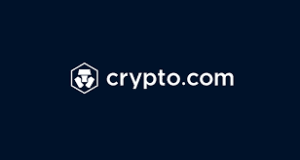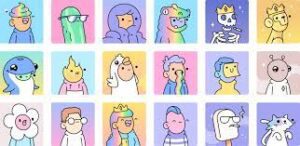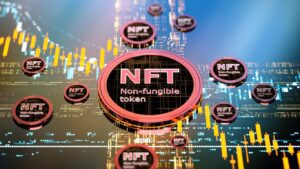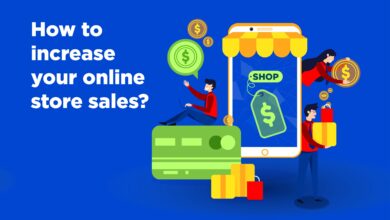
Non-Fungible Token’s (NFTs)
NFTs are widespread nowadays, although many people are still confused about what they are. After taking the art and gaming worlds by storm in million-dollar auctions, NFTs have spread into the mainstream, with celebrities and major corporations getting involved. Adidas teamed with Prada on an NFT project after minting with members of the Bored Ape Yacht Club. McDonald’s
and Coca-Cola have included NFTs in their marketing strategies.
Whether you think NFTs are a speculative trend, but it is a great opportunity for artists, there’s no denying they’re making headlines, and some of the people have even turned them into a business.
What Is an NFT?
NFT stands for Non-Fungible Token are digital blockchain tokens that represent ownership of unique items, whether digital or physical. It is a type of digital token distinguished by its distinct properties and ownership. Non-fungible tokens are digital assets represented by a unique digital asset. Non-fungible tokens are often referred to as “intangible assets” or “crypto-collectibles.” Non-fungible tokens are most commonly used in the gaming or art industries. Anything that can be converted into a digital form can be an NFT. Drawings, photos, art, music, games, audio, videos, and other types of digital files. They are bought and sold online, frequently with cryptocurrency, and they are generally encoded with the same underlying software as many cryptos.
Point of focus
- NFTs are fundamentally different from cryptocurrencies like Bitcoin, which are indistinguishable from one another and thus fungible. The NFTs may be found on the blockchain, where they can’t be copied or modified. It also makes it easier for people to verify the validity of the product.
- The ability of currencies or assets to be freely exchangeable because they are equivalent is referred to as “fungibility.” for example, A 500 rupee note, will always be worth the same as another 500 rupee note. Similarly, the value of one Bitcoin is equal to the value of another Bitcoin in the cryptocurrency world. In contrast, Each NFT is unique and distinct, they cannot be exchanged like-for-like
- Royalty collection – NFTs may include a smart contract-based automated royalty generation system. Such technology would automatically transfer a predetermined portion of the resale proceeds to the original creator of the asset
- Originality – NFTs are intended to give the asset’s purchaser the right to claim originality. Even if others use the same image, audio, or video file, the artist retains the copyright as well as all production rights, just like any other physical asset. For example, anyone interested in purchasing a “Monet” print has the right to do so, but only the owner of the original can control its own and enjoy all other rights.
How do NFTs work?
NFT is based on blockchain and provides users with complete ownership of a digital asset. For example, if you’re a sketch artist and convert your digital asset to an NFT, you’ll get proof of ownership powered by Blockchain
An NFT’s unique identification and ownership can be verified using the blockchain ledger. They were first established on the Ethereum blockchain, but they are now supported by other blockchains such as FLOW and Bitcoin Cash. Whether the actual file is a JPG, MP3, GIF, or something else, the NFT that indicates its ownership can be bought and sold just like any other piece of art and the price is primarily dictated by market demand., as it is with physical art.
If you went into an art gallery’s gift shop, you’d find a number of replicated prints of famous masterpieces; similarly, some NFTs act in the same way. There are parts of the blockchain that are completely valid, but they do not have the same monetary value as the original.
What are NFTs used for?
NFTs can theoretically be attached to pretty much any intellectual property, but activity so far has focused on a few sectors.
- Art and music: Visual art, particularly movies and still photos that have sold for millions of dollars, has been the most widely reported example of NFTs. Some owners, for example, use their NFTs as profile photographs on social media, in online galleries, and even as video conferencing backgrounds.
- Collectibles: Digital versions of other collectibles, such as trading cards, have also shown to be a good fit for NFT technology. Sports leagues such as the NFL, MLB, and NBA have created digital archives to memorialize historic statistics and spectacular plays.
- Gaming and virtual reality: NFTs can be linked to a variety of unique video game objects, such as weapons, clothing, or special characters, many of which have been sold and traded for a long time in in-game marketplaces. NFTs have the ability to make the sale of such things more straightforward and less reliant on central authorities, such as game developers.
Longer term, NFTs may play a part in the formation of the metaverse, which is a realm of virtual environments. According to some predictions, people will spend more time immersed in virtual reality worlds they’ve built in the future years. Exclusive NFTs could rise to a new degree of prominence in certain environments.
How an NFT is different from cryptocurrency?
Cryptocurrencies and NFTs are significantly different from one another. While both are built on Blockchain, the similarities end there.
Cryptocurrency is a currency that is fungible, meaning that it is can be traded or exchanged for one another. They’re also worth the same amount—one dollar is always valued the same another one dollar, and one Bitcoin is always worth the same another one Bitcoin. Cryptocurrency’s fungibility provides it a secure way to perform blockchain transactions.
NFTs are non-fungible, which means the value of one NFT is not equal to another. Every art is different from others, making it non-fungible, and unique.
One NBA Top Shot clip, for example, is not equal to Beedle’s Everyday’s simply they’re both NFTs but don’t have the same value (One NBA Top Shot clip isn’t even necessarily equal to another NBA Top Shot clip, for that matter.)
How to Buy NFTs?
You might want to consider purchasing NFTs now that you know what it’s used for and how it differs from other cryptocurrencies. If you say yes, you’ll need to get a few things first.
You’ll need a digital wallet to hold your NFTs and cryptocurrencies.
Then, depending on which currencies your NFT provider takes, you’ll need to buy some cryptocurrency, most likely Ether.
To buy cryptocurrencies, you can utilize sites such as Open Sea, Coinbase, Kraken, PayPal, and others.
Then you’ll be able to transfer it from the exchange to your preferred wallet.
When buying crypto, keep in mind that most exchanges charge at least a portion of your transaction as fees.
Popular Marketplace
A Non-Fungible Token marketplace is a form of online store that buys and sells art, video, photographs, audio, and other digital assets related to the Non-Fungible Token.
Buyers can buy Images, videos, Audio, Text, and Digitally store or resale them in this marketplace, while NFT Asset Owners can offer their goods for sale and get ownership. These are some of the most well-known Non-Fungible Token Exchanges:
Open Sea

Many people believe that Open Sea is the greatest place to purchase NFTs because it is the world’s largest trading volume marketplace. Since its launch, Open Sea has grown to over one million members, making it the first platform to introduce NFT trading into the mainstream. The Ethereum-based marketplace offers a variety of NFT categories, including art, domain domains, in-game items, and more.
One of OpenSea’s best features is that it accepts over 150 different cryptocurrencies as payment. This allows investors to buy and sell NFTs with their cryptocurrency holdings. When it comes to fees, Open Sea charges sellers a 2.5 percent transaction fee when their item sells, but the buyer doesn’t have to pay any transaction fees(Apart from standard network fees). Finally, Open Sea offers 14 different cryptocurrency wallets and lets users connect their wallets to the marketplace.
Point of Focus
- Transaction fees for sellers are 2.5 percent
- Accepts over 150 cryptos
- Supports 14 different crypto wallets
- Network/Token Used is Ethereum
Rarible

Rarible is one of the most popular NFT art in the marketplaces for investors. since it includes a lot of digital art, as well as photography, games, music, domains, and even metaverse items. The marketplace charges transaction fees to both buyers and sellers a 2.5 percent, putting it on the higher end of the cost spectrum. On the other hand, supports many blockchains and NFTs designed on Ethereum, Flow, and Tezos.
One of the best features of Rarible is providing options to buy NFTs with a credit or debit card . This is one of the largest NFT marketplaces, as it supports over 190 countries, making it simple to buy Rarible NFTs all around the world. Finally, Rarible supports a variety of wallets, including Meta Mask and Coinbase, guaranteeing that investors may safely keep their assets after they have been purchased.
Point of focus
- Multi-chain support
- Can purchase NFTs using a credit or debit card
- Offered in over 190 countries
- Supports various crypto wallets
- Transaction fees to both buyers and sellers a 2.5 percent
- Network/Token Used is Ethereum (with support for Flow and Tezos)
Mintable

Mintable is a blockchain platform built on Ethereum that allows users to produce, distribute, purchase, sell, and exchange digital files on the blockchain through NFTs.The platform allows users to create, distribute, buy, and sell digital crypto products. It is an excellent choice for beginners due to its ease of use. Mintable’s gas-free minting option allows users to participate in NFTs without prior programming experience or the initial expense of minting an asset – a great way for anyone to get started with cryptocurrencies such as bitcoin.
Currently, Mintable supports the Ethereum, Immutable X, and Zilliqa blockchains, providing investors with a wide and varied range of assets to choose from. In terms of the purchasing process, Mintable allows users to pay with ETH or a credit/debit card. Particularly, there is a 5% service fee if paying with a credit card, so these transactions can be costly. Finally, beginners will be relieved to learn that linking a crypto wallet and starting to invest is a simple process that can be completed in minutes.
Point of Focus
- One of the first NFT marketplaces to launch
- Offers gasless minting services
- Supports Ethereum, Immutable X, and Zilliqa
- Can purchase NFTs using a credit or debit card
- Network/Token Used is Ethereum
Crypto.com

Crypto.com is our top recommendation for purchasing NFTs. This popular Ethereum NFT marketplace is one of the top cryptocurrency exchanges in the world, with over ten million users. Crypto.com, in addition to its popular crypto-trading services, has recently launched its own NFT marketplace. The marketplace was founded in 2021 and provides NFTs in categories such as art, celebrities, gaming, sports, music, and cryptocurrency.
Users can sign up for a Crypto.com NFT account in minutes, aiming to simplify the entire investing process. NFTs can be purchased via auction or at a fixed price, and users can pay with a credit or debit card. Alternatively, NFTs can be purchased with cryptocurrency via the ‘Crypto.com Pay’ gateway. The most tempting aspect of the buying process is that there is no transaction cost when purchasing an NFT with Crypto.com, which is unlike many other sites.
Furthermore, Crypto.com provides the greatest NFT app, which allows you to purchase and sell NFTs directly from your mobile device.
Point of focus
- Network/Token Used Crypto.org chain & Ethereum
- No transaction fees when buying NFTs
- Only a 1.99% fee when selling NFTs
- Can buy NFTs with a credit or debit card
Binance

The Binance NFT Marketplace is another highly recommended platform for buying NFTs. According to CoinMarketCap, this marketplace is administered by Binance, the world’s largest cryptocurrency exchange. Binance takes itself in having cheap fees, and this extends to the NFT marketplace, where customers may acquire NFTs for as little as 1% transaction charge. Furthermore, the Binance NFT Marketplace provides NFTs on both the Binance Smart Chain and the Ethereum blockchain, assuring a wide range of tradeable assets.
The Binance marketplace’s design is simple to use, and it offers NFTs in categories including as art, sports, entertainment, gaming, collectibles, and more. Binance also features an appealing ‘Mystery Box’ function, where users can buy a box and receive a random NFT that could be quite valuable. The best part is that if you already have a Binance account, you may use the same credentials to access the NFT marketplace.
Currently, the Binance NFT Marketplace website only permits NFTs to be purchased using crypto — though individuals who do not already own digital currency can simply obtain some via the Binance exchange. NFTs can be purchased via auction or at a set price and transferred to an external NFT wallet.
Finally, Binance’s marketplace allows users to create their own NFTs for a low fee in BNB — the platform’s native coin.
Point of Focus
- Low transaction fees
- Innovative mystery box feature
- Offers NFTs on Ethereum and Binance Smart Chain
- Can buy crypto on Binance exchange for NFT purchases
- Network/Token used is Binance Smart Chain
Nifty Gateway

Nifty Gateway is another great NFT marketplace to explore. Nifty Gateway specialises in ‘premium’ NFT drops, or NFT releases with a small number of assets. The site has featured a wide range of well-known musicians and creatives in the past, including Steve Aoki and Grimes. Nifty Gateway’s selection is geared primarily towards high-end investors due to the high demand for these NFTs.
Gemini, the cryptocurrency exchange founded by the Winklevoss Twins, owns Nifty Gateway. You can buy NFTs using your credit or debit card if you live in the United States. If you’re not in the United States, you’ll have to use the crypto on your Gemini account. Finally, the seller of each NFT is charged a 5% fee plus a $0.30 transaction fee by Nifty Gateway.
Point of Focus
- Network/Token used is Ethereum
- Backed by the Gemini exchange
- Can purchase NFTs using a credit or debit card in the US
- Focuses on ‘premium’ drops
- Has attracted numerous high-profile names
GameStop

One of the most desired NFT platforms for this year is the GameStop marketplace. According to The Verge, GameStop is looking to branch out beyond just selling video games and establish a presence in the non-traditional gaming market. The NFT platform is built on Immutable X, an Ethereum Layer-2 technology, and the company is establishing a large fund for game developers who choose the GameStop marketplace over others.
As you might assume, the GameStop marketplace will be mostly focused on in-game stuff like digital properties, weapons, costumes, and other accessories. The platform’s specifics are still unknown. According to most reports, GameStop will want to partner with major video game studios to provide collectible NFTs that will appeal to fans of specific games.
Point of Focus
- Network/Token Used is Immutable X
- Being built on a Layer-2 Ethereum protocol
- Focus on game-based items
- Looks to partner with video game developers
- Creating a fund for game developers
DraftKings

DraftKings is a large betting company established in the United States that specialises in sports betting. In late 2021, the corporation created its own NFT marketplace, which has limited-edition assets from a number of notable athletes. NFTs from Tom Brady, Tony Hawk, Wayne Gretzky, and others have just been listed on the DraftKings marketplace. Users who currently have a DraftKings account can use their existing login credentials to access the marketplace.
Currently, the marketplace has over 300 collectibles available for purchase, ranging in price from low to high. Users can fund their DraftKings account via credit/debit card, bank transfer, wire transfer, and even PayPal. Notably, only USD purchases are permitted, and DraftKings does not currently handle crypto purchases. Finally, transaction fees for initial drops are unknown, while secondary market sales will result in a 10% royalty charge to the original developer and a 5% transaction fee.
Point of focus
- Partners with high-profile sports names
- Various price points on offer
- Can buy NFTs using PayPal
- Numerous limited-edition collections
- Network/Token used is Polygon
WAX

WAX is a blockchain network that was developed in 2017 with the goal of making e-commerce transactions more efficient. The network is compatible with EOS and uses the blockchain’s power to compete with Ethereum, with the goal of becoming the top network in the space. ‘Simple Market’ is the name of the WAX NFT marketplace, which has over 140,000 digital assets to trade.
WAX – the network’s native token – is used in the vast majority of WAX NFTs. However, Atomic Hub, which claims to provide exchange services with no gas price, has a thriving secondary market for WAX NFTs.Atari and Sony are among the high-profile brands that have already used the WAX blockchain to mint their NFTs, lending the platform enormous credibility. Finally, the cost structure for the first NFT releases is a little hazy, while WAX does charge a 2% transaction fee on the secondary market.
Point of Focus
- Focuses on exclusive art drops
- 10% royalties on secondary sales
- Supports Meta Mask and Wallet Connect
- User-friendly trading interface
Foundation

Foundation is a good site for NFT art if you’re looking for a place to buy it. Foundation is a popular NFT store that sells limited-edition art drops. The NFTs in the Foundation marketplace are sold in an auction format, with the majority of auctions lasting 24 hours after the first bid is put. Foundation’s UI is clean and makes it easy to find the digital art you’re looking for. It’s built on the Ethereum blockchain. In terms of fees, Foundation charges the seller a 15% service fee on each transaction, which is the biggest fee on our list.
However, the NFT art marketplace allows sellers to recuperate part of their costs by offering 10% royalty on secondary market purchases. Because Foundation is hosted on Ethereum, users must pay for NFT purchases with ETH. At the present time, Foundation only supports wallets created with Meta Mask or Wallet Connect, which limits investor access.
Point of Focus
- Focuses on exclusive art drops
- 10% royalties on secondary sales
- Supports Meta Mask and Wallet Connect
- User-friendly trading interface
- Network/Token Used is Ethereum
Most popular of selling NFTs
Here are some of the best selling NFTs so far:
1. Bored Ape Yacht Club

- Last 7 days: $53,394,383
- Number of Sales: 584
- Highest Price: $499,455
BAYC is a collection of 10,000 Bored Ape NFTs—unique digital collectibles living on the Ethereum blockchain. Your Bored Ape doubles as your Yacht Club membership card and grants access to members-only benefits.
2. CryptoPunks

- Last 7 days: $24,778,538
- Number of Sales: 62
- Highest Price: $23,799,920
10,000 unique collectible characters with proof of ownership stored on the Ethereum blockchain. The project that inspired the modern Crypto Art movement. Inspiration for the Ethereum ERC-721 standard that powers most digital art and collectibles.
3. The Sandbox

- Last 7 days: $13,142,775
- Number of Sales: 1,182
- Highest Price: $39,662
The Sandbox is a community-driven UGC-voxel platform where users own their LAND and host their creative magic. Users may buy, sell, and trade their voxel creations on secondary markets and truly become a part of this user-built world where everything you see is built by and for the community.
4. Art Blocks

- Last 7 days: $8,282,359
- Number of Sales: 3,338
- Highest Price: $159,226
Storefront for genuinely programmable and on-demand generative artwork that is stored directly on the Ethereum blockchain. Pick your style and mint! Each piece is randomly generated by an algorithm defined by the artist, there are endless possibilities to what your unique generation could look like.
5. Doodles

- Last 7 days: $6,021,178
- Number of Sales: 260,035
- Highest Price: $81,925
Doodles come in a joyful range of colors, traits, and sizes with a collection size of 10,000. Doodles are a funky bunch that like to role play or transmogrify themselves into delicious treats. Some are not Doodle-sapiens at all! Holding a Doodle allows you to participate in coordinating the Doodles Community Treasury.
6. Cool Cats

- Last 7 days: $5,354,560
- Number of Sales: 162
- Highest Price: $56,044
Cool Cats are a collection of programmatically, randomly generated NFTs on the Ethereum blockchain. The 1st generation consists of 10,000 randomly assembled cats from over 300k total options. Cool Cats that have a variety of outfits, faces and colors – all cats are cool, but completed outfit cats are the coolest.
7. CyberKongz

- Last 7 days: $5,256,926
- Number of Sales: 309
- Highest Price: $243,223
Welcome to an alternate reality, where evolution took a different route and weird apes roam the earth. Some appear normal. Some look weird. And some are just cool! A few CyberKongz are super rare and even animated! Maybe some of them look familiar!
8. Decentraland

- Last 7 days: $4,369,341
- Number of Sales: 284
- Highest Price: $214,347
Decentraland is a virtual reality platform powered by the Ethereum blockchain. Users can create, experience, and monetize content and applications. LAND in Decentraland is permanently owned by the community, giving them full control over their creations. Users claim ownership of virtual land on a blockchain-based ledger of parcels. Landowners control what content is published to their portion of land, which is identified by a set of cartesian coordinates (x,y). Contents can range from static 3D scenes to interactive experiences such as games.
9. FLUF World

- Last 7 days: $3,849,082
- Number of Sales: 419
- Highest Price: $72,344
FLUFs have been programmatically generated from 270 attributes across 14 categories to be entirely unique by at least three degrees of separation. This also excludes their expression, dance, scene, and soundtrack. FLUFs are stored as ERC721 tokens on the Ethereum blockchain.
10. DeadFellaz

- Last 7 days: $2,008,381
- Number of Sales: 213
- Highest Price: $24,779
Each unique Deadfella is randomly generated from a combination of over 400 individually drawn traits, including over 50 different outfits. Deadfellaz each have different eyes, noses, mouths, heads, and bodies – with no traits explicitly gendered to allow all genders to find representation.
What are the risks associated with buying NFTs?
NFTs, like any other entity, have their own dark side. Several incidents of NFT frauds have recently been reported, including the establishment of bogus markets, unverified sellers imitating real artists as well as selling copies of their artworks in half-price.
Crypto Batz, the NFT collection of pop culture legend Ozzy Osbourne, has recently gone live. People complained about a potential phishing link shared by the artist that was draining their cryptocurrency wallets. At least 1,330 people had visited the bogus NFT project. On January 20, an Ethereum wallet address associated with the scammers received a series of incoming transactions totaling 14.6 ETH ($40,895).
A New York-based NFT collector, Todd Kramer, claimed that his $2.28 million (about Rs 16.94 crore) collection of sixteen Bored Ape Yacht Club (BAYC) NFTs had been “hacked.” The assets, which included one Clonex, seven Mutant Ape Yacht Club, and eight BAYC NFTs valued around 615 Ether, were “frozen” for Todd Kramer by the NFT marketplace Open Sea, according to the owner.
Another issue that cannot be ignored in the context of NFTs is their undeniably negative environmental impact. Crypto mining is used to validate transactions, which necessitates the use of high-powered computers that run at extremely high speeds, negatively impacting the environment in the long run.





